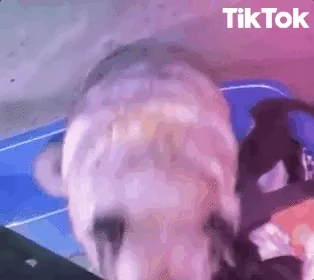- Geniuz Creators Circle
- Posts
- The TikTok Ban Explained
The TikTok Ban Explained
How the Blackout Reshaped Marketing

Stay up-to-date with AI
The Rundown is the most trusted AI newsletter in the world, with 1,000,000+ readers and exclusive interviews with AI leaders like Mark Zuckerberg, Demis Hassibis, Mustafa Suleyman, and more.
Their expert research team spends all day learning what’s new in AI and talking with industry experts, then distills the most important developments into one free email every morning.
Plus, complete the quiz after signing up and they’ll recommend the best AI tools, guides, and courses – tailored to your needs.
Good morning everyone! We NEED to Talk Social!
It’s been a whirlwind for marketers, creators, and businesses alike—TikTok, the app that redefined short-form content and became a cornerstone of digital strategy, went dark on January 18, leaving many in the industry scrambling. The platform's sudden inaccessibility wasn’t just a tech hiccup; it was the result of a ban enacted across the United States, shaking up how we think about marketing, creativity, and the future of social media.
But, as always, the marketing world is nothing if not adaptable. Let’s dive into what happened, why it matters, and what this means for your strategy moving forward.
The TikTok Ban: What Happened?
On January 19, TikTok users across the U.S. woke up to find the app completely unusable. This wasn’t a glitch—it was the result of growing national concerns over data privacy and security. Lawmakers cited TikTok’s ties to ByteDance, a Chinese company, as a potential risk, prompting the U.S. government to take action. The app was banned in an unprecedented move, cutting off its 150+ million American users overnight.
The ban sent shockwaves through the marketing industry. TikTok had become a go-to platform for businesses, offering unparalleled reach, engagement, and a direct line to younger audiences. Campaigns, trends, and brand identities were tied to the app, and its absence left a void.
The Comeback (and What’s Still Missing)
Fortunately, TikTok’s legal team negotiated with the U.S. government. The app was restored in just hours, but the short experience left a lasting mark. Meanwhile, sister apps CapCut and Lemon8 didn’t share TikTok’s fate—they remain inaccessible for now, leaving creators without two of their most popular tools.
CapCut, in particular, was a vital resource for editing high-quality TikTok content, and its absence has many creators wondering: what now? Enter Meta, which is rumored to be launching a new editing app called Edits. Other alternatives like Splice and InShot are also great options to fill the void. These apps may not replace CapCut exactly, but they offer robust features to keep your content looking sharp.

A Lesson in Dependence: Why Diversification Matters
The TikTok ban was a wake-up call. As marketers, we often fall into the trap of relying heavily on a single platform or tool. TikTok’s absence reminded us of a critical lesson: apps and platforms are resources—not our entire world.
While TikTok offered incredible opportunities, it also created a monopoly on short-form content. The same goes for CapCut’s dominance in editing. Just because an app is outstanding doesn’t mean we should prioritize it at the expense of diversification. There will always be alternatives, and new platforms will emerge to fill the gaps.
Meta, for instance, has proven time and again its ability to adapt and innovate. Instagram and Facebook reels continue to evolve, and with the rumored Edits app, Meta is stepping up to fill the CapCut void. Meanwhile, YouTube Shorts, Snapchat Spotlight, and other platforms remain strong contenders for video content.
How This Shift Could Benefit Strategy
Less can sometimes be more. With fewer platforms to juggle, marketers have an opportunity to centralize their efforts. Instead of spreading campaigns thin across multiple channels, the focus can shift to creating high-quality content tailored to a few core platforms.
Instagram, for example, has undergone significant updates. The traditional square feed is giving way to a more Reels-friendly format, making the platform even more attractive for video-first strategies. By leaning into these updates, businesses can stay ahead of the curve and build more cohesive campaigns.

@YOURSOCIALTEAM
Adapting to Change: Moving Forward
Had TikTok not returned, the marketing world wouldn’t have crumbled—it would’ve adapted. YouTube Shorts, Instagram and Facebook Reels, and countless other apps offer incredible opportunities to engage audiences. And new tools and platforms will continue to emerge.
Here’s the reminder we all need: social media is a tool, not the entire toolbox. When circumstances shift, creativity prevails. Whether it’s finding new editing software or shifting focus to another platform, marketers always find a way to thrive.
Final Thoughts: Lessons from the TikTok Ban
The TikTok ban may have been temporary, but its impact was profound. It reminded us of the importance of diversifying our strategies, staying adaptable, and embracing change. As long as we prioritize creativity, authenticity, and connection, our campaigns will remain strong—no matter what platform we’re using.
So let’s keep moving forward. Explore new tools, experiment with new platforms, and remember: apps are just tools; your creativity is the true foundation.
Written By: Aylin Madrigal - Chief Marketing & Operations Officer at Brand Geniuz





Reply